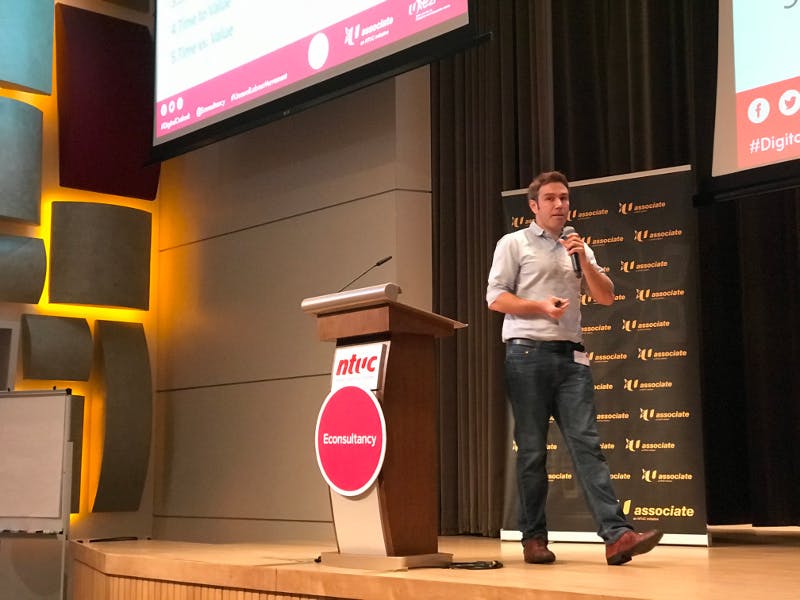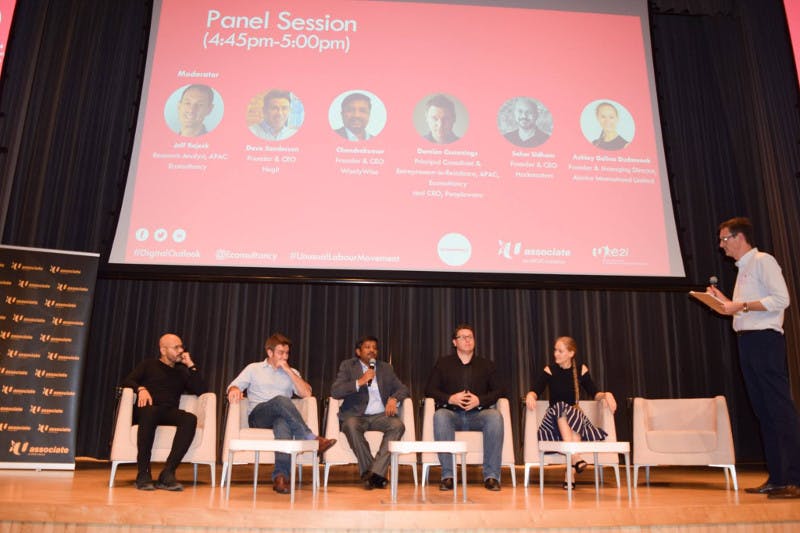More forward-thinking organisations, however, have been pushing ahead with new analytics tools and processes. To find out more about these trends in marketing analytics, Econsultancy recently invited industry expert David Sanderson, CEO, Nugit to present at Digital Outlook 2018 in Singapore. To an audience of over 400 marketers, David spelled out what will be driving marketing analytics in 2018 and how marketers can keep up.
1) Marketing analysts will need to use many new data sources
Traditionally, business decisions in many organisations were powered by marketing analytics which relied on big, centralized-managed data servers or data warehouses. According to David, though, things have been changing recently and now companies find that analysts also need to ferret out data stored in many ‘mini’ data warehouses.
In addition to the usual internal data repositories, marketing analysts also need to pull data from dozens of separate systems including:
- Google Analytics
- SEO platform
- Salesforce or other CRM
- Email service provider
- Major media platforms: Facebook, Twitter, AdWords
- Chat applications
Combined, these data sources will provide better insights for marketing and sales than internal systems on their own and they will help the business drive consumer interest, optimize pricing, and deliver an improved customer experience.
So, according to David, analysts must now do more than just analyse. They must also identify where important data resides, determine what needs to be extracted and devise a strategy for using new data sources to drive business decisions.

2) Artificial intelligence (AI) will be essential for analytics
David also noted that the speed of data coming into the organisation has now increased to the extent that it is no longer possible for human analysts to process it all.
To help, a number of firms have sprung up which offer marketing analytics with baked-in artificial intelligence (AI). These systems use machine learning and other AI techniques to help analysts find patterns in customer data, elicit recommendations for optimising performance, and allow non-professionals to access complicated analytics using simple language.
For example, Hyper Anna, a venture-backed marketing provider of ‘machine intelligence for marketers’, takes in company data and returns ‘high-impact use cases’. This means that marketing data such as customer interactions, financial performance, and supplier activities can be uploaded and Hyper Anna provides information about cross-sell and upsell opportunities, revenue forecasting, and supply chain management information.
Another firm, Datorama offers ‘AI-powered marketing intelligence’ which makes it easy for marketers to unify data across systems and access powerful analytics using natural language. David pointed out that Datorama is now integrated with Amazon’s Alexa and offers voice-activated marketing analytics.

Data analytics trends in 2018: What do the experts predict?
3) Analysts will become storytellers
While the analyst toolbox traditionally consisted of skills such as SQL, business analysis, and Excel, analysts in 2018 will be expected to do much more than crunch data and produce reports.
With the new data sources and AI tools described above, analysts will be expected to:
- Obtain data from non-traditional sources,
- Clean data with programming languages such as Python,
- ‘Polish’ the data using data visualization tools and create attractive charts and graphs, and
- Transform data into easy-to-understand stories which help non-analysts understand emerging trends and opportunities
Simply creating a dashboard and sending out a weekly report will not be enough. Like all marketers, analysts in 2018 will have to focus more on their customers – the people in the organisation who need to extract meaning from all of the data now available so that they can improve business performance.
A word of thanks
Econsultancy would like to thank David Sanderson, CEO Nugit for his presentation about what we can all expect for marketing analytics in 2018.
We’d also like to thank everyone who attended on the day. We hope you gained valuable insights from the programme and that we will see you at future Econsultancy events!

Google analytics: How to filter out spam traffic to get accurate data


Comments